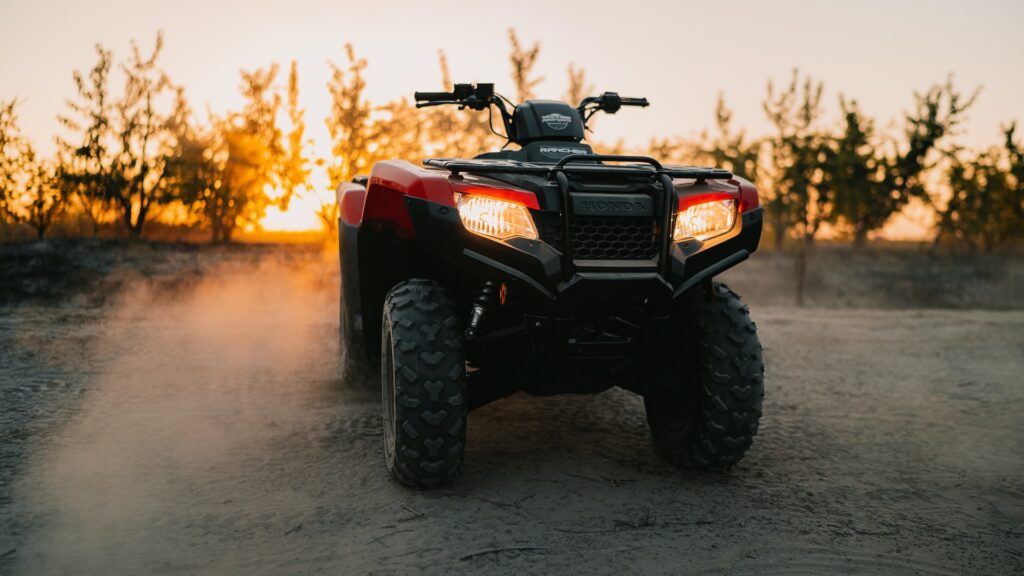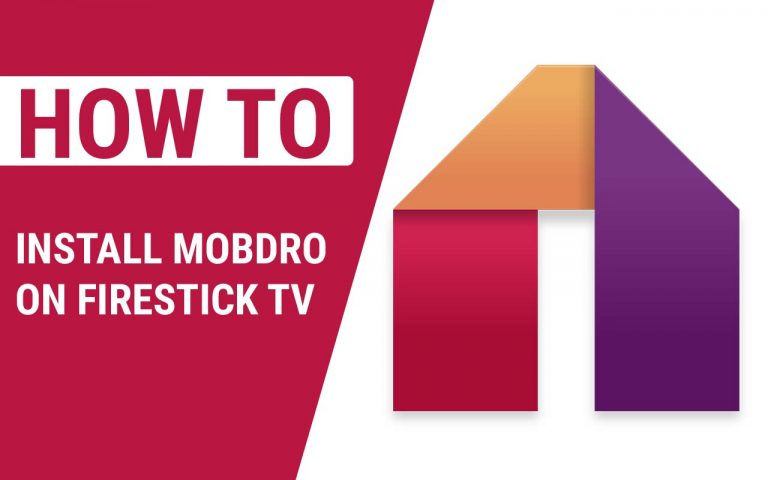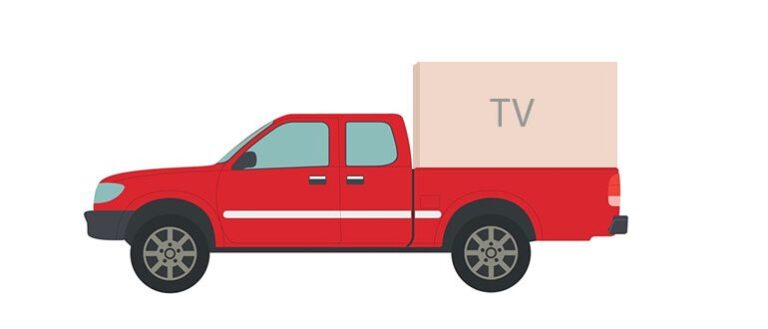How to Tie Down an ATV on a Trailer – Easy Steps
Last Updated on November 2, 2023 by Jhonni Jets

All-terrain vehicles (ATVs) are designed for riding over rough terrain, but they still need to be properly secured when transporting them on a trailer. Safely tying down your ATV ensures it won’t shift, slide or tip over during transport.
This guide will provide step-by-step instructions on the best methods for strapping your ATV onto a trailer. You’ll learn:
Table of Content
- The right equipment needed for tie downs
- Where to attach straps on the ATV frame
- How to use various tying techniques
- Tips for getting proper tension and angles
- Extra precautions for safe towing
Properly immobilizing your ATV takes a little time and the right approach. Following these instructions will give you peace of mind that your ATV will arrive safely at any destination when towed. Let’s get started securing that ride for transport!
Step 1: Gather the Proper Tie Down Equipment
The first step is making sure you have the right gear to securely fasten your ATV to the trailer. Here’s the basic equipment you’ll need:
- Tie down straps – Use heavy duty ratchet straps with a minimum 1500 lb rating. Have at least four straps.
- Edge protectors – Foam or rubber pads that prevent strap abrasion damage.
- D-rings – For attaching straps to the trailer bed. D-rings bolt or weld on.
- Carabiners – For connecting hook ends of straps together or to D-rings. Get spring-loaded ones.
- Wheel chocks – Sturdy rubber or plastic wedges prevent rolling.
Don’t use old, frayed or weak straps. Invest in top quality equipment designed specifically for hauling ATVs. It’s also helpful to have work gloves to protect your hands while tensioning straps.
Step 2: Position the ATV on the Trailer
With your equipment ready, now back the ATV onto the trailer and position it. Follow these guidelines:
- Angle the ATV slightly toward the front of the trailer if possible.
- Make sure the tires sit in the wheel recesses if provided.
- Leave some space around the ATV for strap clearance.
- Place wheel chocks tightly under the rear tires.
- Ensure the trailer bed is clean and free of debris.
Positioning the ATV in the ideal centered spot on the trailer bed will facilitate strapping it down securely in the next steps. Take a minute to properly situate the ATV before strapping.
Step 3: Attach Straps at Connection Points
ATVs have specific reinforced connection points designed for attaching straps when securing cargo. You should always fasten your tie down straps to these factory connection points for maximum holding strength.
Here are the common tie down locations on most ATVs:
- Underneath cargo racks – Many racks have dedicated loops or hooks for straps here.
- On the frame near the wheels – Look for welded tabs with holes along the bottom frame.
- Handlebar mounts – Some mounting holes double as tie downs.
- Bumper spots – Reinforced areas on rear and front bumpers work too.
Take a look at your particular ATV model to locate the reinforced strap connection points before proceeding.
Step 4: Arrange the Straps in an X-Pattern
With your ATV positioned and strap connection points identified, now run the straps in the proper configuration. The most secure way is an X-pattern.
Here is how to arrange in an X:
- Run one strap from the front right of the ATV diagonally across to the rear left trailer D-ring.
- Run another strap from the front left ATV diagonally back to the rear right D-ring.
- Do the same creating an X for the rear using the back ATV tie downs.
This full X-pattern with the straps crossing binds the ATV laterally and longitudinally. The forward and backward forces cancel out.
Step 5: Tighten and Secure Straps
With the X-pattern arranged, carefully tighten each strap in a star pattern sequence.
Follow this order:
- Tighten the front right strap first.
- Move diagonally and tighten the rear left strap.
- Tighten the rear right strap across the X.
- Finish with the front left strap.
Use the ratcheting mechanism to tighten until the straps are snug but not so tight they deform the plastics. The ATV should not be able to move or rock at all.
Finally, secure any loose hook ends with carabiners so they don’t fly around during transport. Double check all connections.
Step 6: Attach Redundant Safety Straps
For extra redundancy and hold strength, it’s smart to add a couple additional straps at angles.
- Run two more straps from the front to back in an A shape.
- Or cross two more straps diagonally like an H-pattern over the X shape.
These extra straps act as a backup if the main X straps loosen. All angles are covered to eliminate any possible shifting.
Step 7: Inspect and Adjust After Initial Transport
Before your next tow, carefully inspect the tie downs. Some settling and stretching can occur after the first transport that may require adjustments.
Look for:
- Any loose straps that need re-tightening.
- Spots where the strap made contact or rubbed.
- If the straps stayed in position.
- Any signs of movement or sliding.
Make any necessary adjustments in the strapping arrangement and tension. It helps dial in the optimal setup.
Safety Tips for Towing an ATV on a Trailer
Beyond just strapping techniques, here are some additional safety tips:
- Double check all strap buckles and carabiners are clipped and secure.
- Ensure your trailer tires, lights and chains are in good shape.
- Verify that the trailer hitch and ball are rated for the total tow weight.
- Inspect the ATV for any fluid leaks and repair. Leaks can spray items on the trailer.
- Avoid towing your ATV in poor weather conditions with high winds or visibility issues.
- Ensure your tow vehicle has the engine power, brakes and suspension to safely control the trailer.
- Check that all trailer running lights, turn signals and brakes are functioning before each trip.
Taking precautions ensures the safest trailer towing experience possible for your ATV.
Troubleshooting Common ATV Tie Down Issues
If you’re having problems getting your ATV strapped down securely, here are some tips that may help:
- Try a different X-pattern arrangement to improve hold.
- Switch to heavier duty 2000+ lb straps if needed for stability.
- Make sure your straps have a non-stretchy composition, not elasticized.
- Confirm there are no cracks or defects in the plastic strap connection points.
- Check that your D-rings are properly mounted to reinforced areas of the trailer.
- Utilize all available reinforced ATV anchor points to distribute force.
- Be certain your ratchet mechanisms adequately tension and stay tight.
- Consider adding a trailer tongue weight distribution hitch system for larger ATVs.
Carefully strapping and inspecting for any adjustment issues will get your ATV trailer bound securely.
Conclusion
Towing your ATV safely to trails, tracks and adventures requires properly tying it down onto your trailer. Correct strap arrangements, proper anchor points, tight tension, redundant backups and good driving practices ensure your machine stays put. Pay attention to the recommendations in this guide anytime you need to strap that ATV for effective transport. Take it slow and double check your work, so you can look forward to happy trails ahead.







